Ludlum Meters
Request a Quote
Ludlum Measurements designs and manufactures radiation detection instruments and technologies. Founded in 1962, Ludlum offer a large array of radiation detection instrumentation, developed to help monitor the safety of personnel and the environment. Their instruments are used in applications such as routine personnel and material monitoring, border security, and emergency response situations. Ludlum is widely regarded as the worlds best radiation detection manufacturer.
Contamination
Radiation meters and detectors designed to measure both fixed and non-fixed surface contamination. Contamination meters often read in counts per minute (cpm), counts per second (cps), or becquerels per centimetre squared (Bq/cm2)
Model 2401-P
The Model 2401-P instrument is a general purpose, pocket-size radiation detection meter designed around the venerable GM pancake detector. The detector is conveniently packaged inside the instrument with a protective screen window. This instrument is available with a variety of meter faces for measuring contamination and exposure rate in either R or Sv units.
Detector | Pancake GM detector, stainless steel screen (79% open) |
Radiation Detected | Alpha and beta with some gamma response |
Measurement Modes | Counts per minute (cpm), milliroentgen (mR/h) |
Count Range | 0 to 200 mR/hr 0 to 660 kcpm |
Physical Specs | 4.6 x 8.4 x 13.5 cm (1.8 x 3.3 x 5.3 in.) 0.4 kg (0.9 lb), including battery |
Battery | 9V alkaline battery Battery life ~ 250 hours with alkaline battery |

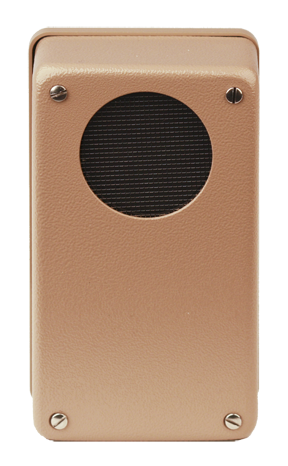
Model 26 Frisker
The cable-less Model 26 consolidates the electronics and the detector into one ergonomic housing. This optimized configuration incorporates a standard GM pancake probe, loud audio “click” output, and large auto-ranging LCD display with automatic back lighting into one convenient package, making it easier than ever to detect contamination.
Operation is kept extremely simple through the use of just two buttons. A useful feature employed in the design is the MAX mode, which captures the highest or peak count rate. It is particularly convenient whenever the display is not directly visible. The scaler mode, with a preset count time, allows the user to take a discrete measurement. This system also incorporates low power circuitry, delivering hundreds of hours of use with just two standard “AA” size batteries. The calibrator can protect parameters (cps/cpm, response time, alarm points, & scaler time) or allow the user to adjust them.
Detector | Pancake GM detector, stainless steel screen (79% open) |
Radiation Detected | Alpha and beta with some gamma response |
Measurement Modes | Counts per minute (cpm), Counts per second (cps) |
Count Range | 0.1 cps – 1.99 kcps 1 cpm – 99.9 kcpm |
Physical Specs | 4.6 x 6.9 x 27.2 cm (1.8 x 2.7 x 10.7 in.) 0.45 kg (1.0 lb) |
Battery | Two (2) AA alkaline batteries Battery life ~ 1,000 hours at background reading |
Temperature | -20 to 50 °C (-4 to 122 °F) May be certified for operation from -40 to 65 °C (-40 to 150 °F) |

Model 3 with 44-9 Pancake
The Model 3 is Ludlum’s best selling, general purpose, handheld, analog ratemeter known for accuracy and long-lasting dependability. It comes in a variety of measurement ranges and units to support the external radiation detector selected.
The GM pancake-type detector in the Model 44-9 is one of the most popular radiation detectors used throughout the world. This alpha, beta, and gamma radiation detector has a rugged metal housing and is conveniently shaped and sized for checking contamination on people and objects.
Detector | Pancake GM detector, stainless steel screen (79% open) |
Radiation Detected | Alpha and beta with some gamma response |
Measurement Faces | Counts per minute (cpm), microsieverts per hour (µSv/h)(w/ dose filter) |
Efficiency (4π) | 14C: 5% 90Sr/90Y: 22% 99Tc: 19% 32P: 32% 239Pu: 15% 99mTc: ≤ 1% 125I: 0.2% |
Physical Specs | Meter – 16.5 x 8.9 x 21.6 cm (6.5 x 3.5 x 8.5 in.), including handle, 1.6 kg (3.5 lb), including batteries Probe – 4.6 x 6.9 x 27.2 cm (1.8 x 2.7 x 10.7 in), 0.5 kg (1 lb) |
Battery | Two (2) “D” alkaline batteries Battery life ~ 1,000 hours at background reading |
Temperature | -20 to 50 °C (-4 to 122 °F) May be certified for operation from -40 to 65 °C (-40 to 150 °F) |

Model 3000 with 44-9 Pancake
The Ludlum Model 3000 is a durable, lightweight instrument that is used with an external detector for alpha, beta, and gamma radiation survey. It features a large, easy-to-read LCD screen and audible alarms and is controlled using a simple five-button interface. The unit body is made of high-impact plastic, and splash-resistant construction allows the instrument to be used outdoors.
The GM pancake-type detector in the Model 44-9 is one of the most popular radiation detectors used throughout the world. This alpha, beta, and gamma radiation detector has a rugged metal housing and is conveniently shaped and sized for checking contamination on people and objects.
Detector | Pancake GM detector, stainless steel screen (79% open) |
Radiation Detected | Alpha and beta with some gamma response |
Measurement Modes | 0.0 cps to 99.9 kcps 0.00 cpm to 999 kcpm 0.00 Bq to 99.9 kBq 0.00 dpm to 999 kdpm 0.00 µR/h to 999 R/h 0.00 µSv/h to 999 Sv/hMax Display can be set to limit display to calibrated range |
Efficiency (4π) | 14C: 5% 90Sr/90Y: 22% 99Tc: 19% 32P: 32% 239Pu: 15% 99mTc: ≤ 1% 125I: 0.2% |
Physical Specs | Meter – 16.5 x 11.4 x 21.6 cm (6.5 x 4.5 x 8.5 in.), 0.9 kg (2.0 lb) Probe – 4.6 x 6.9 x 27.2 cm (1.8 x 2.7 x 10.7 in), 0.5 kg (1 lb) |
Battery | Four (4) “AA” alkaline batteries Battery life ~ 750 hours at background reading |
Temperature | -20 to 50 °C (-4 to 122 °F) May be certified for operation from -40 to 65 °C (-40 to 150 °F) |

Dose Rate
Radiation meters designed to measure radiation dose rates. Dose rate meters typically read in microsieverts per hour (μSv/h), milliroentgen per hour (mR/h), or millirem per hour (mrem/h).
Model 2401-EC
The Model 2401-EC instrument is a pocket-size radiation detection meter with an integrated energy-compensated GM tube for measuring gamma exposure. The meter measures 0 to 200 mR/hr exposure rate and also 0 to 210,000 cpm via separate scales. The metal case offers excellent protection against abuse. The overall size and integrated design facilitate ease of use.
Detector | Energy-compensated GM tube |
Radiation Detected | Gamma |
Count Range | 0 to 200 mR/h 0 to 2000 µSv/h 0 to 210,000 cpm |
Physical Specs | 4.6 x 8.4 x 13.5 cm (1.8 x 3.3 x 5.3 in.) 0.4 kg (0.9 lb), including battery |
Battery | 9V alkaline battery Battery life ~ 250 hours with alkaline battery |

Model 26-1
The cable-less Model 26-1 consolidates the electronics and the detector into one ergonomic housing. This optimized configuration incorporates a standard GM pancake probe, loud audio “click” output, and large auto-ranging LCD display with automatic back lighting into one convenient package, making it easier than ever to detect contamination.
Three modes of operation are available — RATE, MAX, and COUNT — which can be selected by pressing the MODE button. RATE mode displays the current count, exposure, or activity rate. MAX mode captures the highest count, exposure, or activity rate detected; this is useful for finding a peak rate or for frisking when the display is not visible. COUNT mode allows the operator to perform a survey for a preset amount of time; depending on the chosen units, the count result can be a scaler count, a time-averaged rate, a time-averaged exposure or dose rate, or an integrated exposure or dose. Measurements can be displayed in units of cps, cpm, dpm, Bq, mR/h, or μSv/h. The user can switch between two sets of chosen units (primary and secondary) for RATE and MAX modes by pressing the UNITS button.
Detector | Pancake GM detector, stainless steel screen (79% open) |
Radiation Detected | Alpha and beta with some gamma response |
Measurement Modes | Counts per minute (cpm), Counts per second (cps), microsieverts per hour (µSv/h), milliroentgen (mR/h) |
Count Range | 0.00 cps to 19.9 kcps 0 cpm to 999 kcpm 0.00 Bq to 19.9 kBq 0 dpm to 999 kdpm 0.00 to 500 mR/h 0.00 to 1999 µSv/h |
Physical Specs | 4.6 x 6.9 x 27.2 cm (1.8 x 2.7 x 10.7 in.) 0.45 kg (1.0 lb) |
Battery | Two (2) AA alkaline batteries Battery life ~ 1,000 hours at background reading |
Temperature | -20 to 50 °C (-4 to 122 °F) May be certified for operation from -40 to 65 °C (-40 to 150 °F) |

Model 3 with 44-38
The Model 3 is Ludlum’s best selling, general purpose, handheld, analog ratemeter known for accuracy and long-lasting dependability. It comes in a variety of measurement ranges and units to support the external radiation detector selected.
The 44-38 is a stainless steel energy compensated GM detector. With a flattened energy response, this probe is perfect for use alongside Radiation Devices & Sealed Sources.
Detector | Halogen quenched GM, 30 to 45 mg/cm2 stainless steel wall |
Radiation Detected | Gamma and Beta(Window Open) |
Measurement Faces | microsieverts per hour (µSv/h), milliroentgens per hour (mR/h) |
Energy Response | Within 20% of 137Cs (662 keV) |
Physical Specs | Meter – 16.5 x 8.9 x 21.6 cm (6.5 x 3.5 x 8.5 in.), including handle Probe – 3.3 x 16.5 cm (1.3 x 6.5 in) Meter – 1.6 kg (3.5 lb), including batteries Probe – 0.5 kg (1 lb) |
Battery | Two (2) “D” alkaline batteries Battery life ~ 1,000 hours at background reading |
Temperature | -20 to 50 °C (-4 to 122 °F) May be certified for operation from -40 to 65 °C (-40 to 150 °F) |
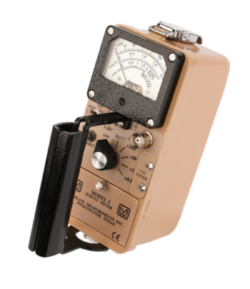
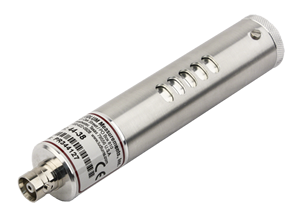
Model 3000 with 44-38
The Ludlum Model 3000 is a durable, lightweight instrument that is used with an external detector for alpha, beta, and gamma radiation survey. It features a large, easy-to-read LCD screen and audible alarms and is controlled using a simple five-button interface. The unit body is made of high-impact plastic, and splash-resistant construction allows the instrument to be used outdoors.
The 44-38 is a stainless steel energy compensated GM detector. With a flattened energy response, this probe is perfect for use alongside Radiation Devices & Sealed Sources.
Detector | Halogen quenched GM, 30 to 45 mg/cm2 stainless steel wall |
Radiation Detected | Gamma and Beta(Window Open) |
Measurement Faces | microsieverts per hour (µSv/h), milliroentgens per hour (mR/h) |
Energy Response | Within 20% of 137Cs (662 keV) |
Physical Specs | Meter – 16.5 x 11.4 x 21.6 cm (6.5 x 4.5 x 8.5 in.), 0.9 kg (2.0 lb) Probe – 3.3 x 16.5 cm (1.3 x 6.5 in), 0.5 kg (1 lb) |
Battery | Four (4) “AA” alkaline batteries Battery life ~ 750 hours at background reading |
Temperature | -20 to 50 °C (-4 to 122 °F) May be certified for operation from -40 to 65 °C (-40 to 150 °F) |
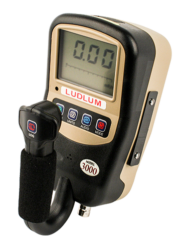

NORM
Radiation meters designed to measure Naturally Occurring Radioactive Material (NORM). A NORM meter typically utilizes a
- Thin-window “pancake” GM detector to measure alpha, beta, and gamma surface contamination
- Sodium iodide (NaI) crystal to measure gamma dose rates
Model 3-97
The Ludlum 3-97 NORM meter is excellent for measuring NORM in all kinds of processing facilities. This instrument is highly sensitive to alpha, beta and gamma radiation. ALARA Model 3-97 NORM meters are modified with colour coding and labelling for the easiest possible operator usage. The analog meter dial allows for a more natural response.
Detector | Pancake: External thin window Gieger-Mueller (GM) detector Scintillator: Internal 1″ NaI crystal scintillation detector | |
Radiation Detected | Pancake: Alpha and beta with some gamma response Scintillator: Gamma | |
Measurement Modes | Pancake: Counts per minute (cpm) Scintillator: Microsieverts per hour (μSv/h) | |
Operating Range | Pancake: 0 – 850,000 cpm Scintillator: 0 – 50 μSv/hRange selector switch: Off, battery check, x0.1, x1, x10, x100 | |
Physical Specs | Meter Body: 24.1 x 8.9 x 21.6 cm (9.5 x 3.5 x 8.5 in.) | 2 kg (4.4 lb) Pancake:4.6 x 6.9 x 27.2 cm (1.8 x 2.7 x 10.7 in) | 0.5 kg (1 lb) | |
Battery | 2 D Cell Batteries Typically 600 hours battery life | |
Display | Analog meter dial | |
Online Ludlum 3-97 NORM Meter Training
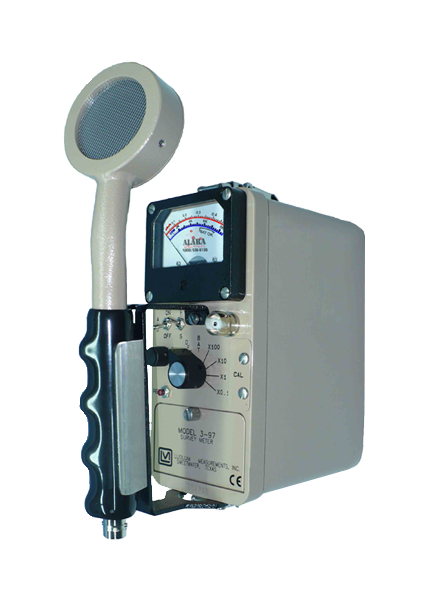
Model 3001 2RK
The Model 3001-2RK is composed of two dependable, high-quality detectors matched with the versatile Model 3001 survey meter. The kit includes the Model 44-9 alpha-beta-gamma detector for surface contamination measurements and the Model 44-2 high-sensitivity gamma detector for measuring gamma dose rates.
Detector | Pancake: External thin window Gieger-Mueller (GM) detector (44-9) Scintillator: External 1″x1″ NaI crystal scintillation detector | |
Radiation Detected | Pancake: Alpha and beta with some gamma response Scintillator: Gamma | |
Measurement Modes | Pancake: Counts per minute (cpm) or counts per second (cps) Scintillator: Microsieverts per hour (μSv/h) or milliroentgen (mR/h) | |
Display Range | 0 – 999,000 cpm 0.00 μSv/h – 999 Sv/h | |
Physical Specs | Meter Body: 16.5 x 11.4 x 21.6 cm (6.5 x 4.5 x 8.5 in.) | 0.9 kg (2.0 lb) Pancake: 4.6 x 6.9 x 27.2 cm (1.8 x 2.7 x 10.7 in) | 0.5 kg (1 lb) Scintillator: 5.1 x 21 cm (2 x 8.25 in) | 0.5 kg (1 lb) | |
Battery | Four alkaline or four rechargeable “AA” batteries ~ 500 hours battery life | |
Display | 3-digit auto-ranging LCD with large 20 mm (0.8 in.) digits. | |

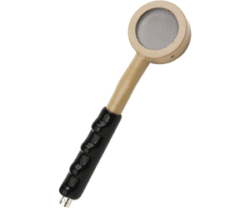

Model 26 Frisker
The cable-less Model 26 consolidates the electronics and the detector into one ergonomic housing. This optimized configuration incorporates a standard GM pancake probe, loud audio “click” output, and large auto-ranging LCD display with automatic back lighting into one convenient package, making it easier than ever to detect contamination.
Operation is kept extremely simple through the use of just two buttons. A useful feature employed in the design is the MAX mode, which captures the highest or peak count rate. It is particularly convenient whenever the display is not directly visible. The scaler mode, with a preset count time, allows the user to take a discrete measurement. This system also incorporates low power circuitry, delivering hundreds of hours of use with just two standard “AA” size batteries. The calibrator can protect parameters (cps/cpm, response time, alarm points, & scaler time) or allow the user to adjust them,
Detector | Pancake GM detector, stainless steel screen (79% open) |
Radiation Detected | Alpha and beta with some gamma response |
Measurement Modes | Counts per minute (cpm), Counts per second (cps), microsieverts per hour (µSv/h), milliroentgen (mR/h) |
Count Range | 0.1 cps – 1.99 kcps 1 cpm – 99.9 kcpm |
Physical Specs | 4.6 x 6.9 x 27.2 cm (1.8 x 2.7 x 10.7 in.) 0.45 kg (1.0 lb) |
Battery | Two (2) AA alkaline batteries Battery life ~ 1,000 hours at background reading |
Temperature | -20 to 50 °C (-4 to 122 °F) May be certified for operation from -40 to 65 °C (-40 to 150 °F) |

Neutron
Radiation meters designed to measure neutron dose rates. Neutron meters typically read in microsieverts per hour (μSv/h), milliroentgen per hour (mR/h), or millirem per hour (mrem/h), but can also detect the neutron radiation as a count rate (cpm or cps).
Model 2363 with 42-41L
This gamma/neutron survey meter combines Ludlum Model 2363 survey meter with the Model 42-41L PRESCILA neutron detector. The gamma detector is an energy compensated GM housed internally to the survey meter. The neutron detector is a proton recoil type, which provides excellent measurement results at less weight than the more traditional REM balls. The neutron measurement has excellent gamma rejection up to 100 mR/hr.
Detector | Model 42-41L PRESCILA Neutron Detector (External): 0.1 mrem/hr to 1 rem/h Energy-Compensated Gamma GM Detector (Internal): 0.1 mR/hr to 1 R/hr |
Radiation Detected | Gamma/Neutron |
Gamma Rejection (137Cs) | Approximately 400 cpm at 100 mR/hr |
Physical Specs | Without PRESCILA: 19.6 x 8.9 x 21.1 cm (7.7 x 3.5 x 8.3 in.), including connector protrusion, 2.0 kg (4.5 lb), including batteries With PRESCILA: 32.3 x 13.7 x 34.3 cm (12.7 x 5.4 x 13.5 in.), including connector protrusion, 4.2 kg (9.2 lb), including batteries |
Battery | Two (2) “D” alkaline batteries Battery life ~ 200 hours |

Model 12-4
The Model 12-4 is an industry standard neutron dose rate instrument that conforms to the RPG curve with a measuring range of 0 to 100 mSv/h (0 to 10,000 mrem/hr) from thermal to 12 MeV.
Detector | 3He proportional detector, 1.6 x 2.5 cm (0.6 x 1.0 in.) (D x L), surrounded by a 22.9 cm (9.0 in.) diameter cadmium loaded polyethylene sphere |
Radiation Detected | Neutron |
Gamma Rejection (137Cs) | < 10 cpm through 0.1 Sv/hr (10 R/hr) |
Physical Specs | 43.2 x 22.9 x 26.7 cm (17.0 x 9.0 x 10.5 in.) 8.3 kg (18.3 lb), with batteries |
Battery | Two (2) “D” alkaline batteries Battery life ~ 600 hours |

Ion Chamber
Model 9DP
The Model 9DP is a digital, hand-held pressurized ion chamber that provides highly sensitive exposure measurements of gamma and x-ray radiation at energies above 25 keV and beta radiation at energies above 1 MeV. Measurements and instrument status are displayed on a large, 232K-color, backlit LCD screen. The screen displays the current exposure rate as well as simultaneously displaying either the integrated exposure rate or the peak exposure rate in Sv, R, Gy, or rem units.
Detector | Ion Chamber – 230 cc (14 in3) volume pressurized to 9 atm (117 psig ± 5 psig) |
Radiation Detected | Gamma & X-rays above 25 keV Beta above 1 MeV |
Measurement Modes | Simultaneous display of rate and either the integrated value or highest (peak) rate(mR/h, μSv/h) |
Minimum Display | 0.01 µSv/h (0.1 µR/hr, 0.01 µGy/h, 0.1 µrem/h) |
Physical Specs | 21.9 x 11.6 x 24.5 cm (8.6 x 4.6 x 9.6 in.) 1.5 kg (3.3 lb), including batteries |
Battery | Rechargeable NiMH, charger included |
Temperature | -20 to 40 °C (-4 to 104 °F) |
NOTE: This instrument requires TDG Class 2.2 training to ship.
Please see the instrument manual for details.

Model 9-3
The Ludlum 9-3 ion chamber is a rugged air ionization chamber for performing beta-gamma dose rate measurements over a five-decade span ranging from background to 500 mSv/h (50 R/hr). The chamber wall (including the instrument case) is 1000 mg/cm2. A 1000 mg/cm2 retractable beta shield allows beta measurement with a 7 mg/cm2 window. The six-position switch selects Off, x10k, x1k, x100, x10 and x1. Each range has a front-panel mounted calibration control. Other features include an audio output, reset, and zero adjust capabilities. Means are also provided to zero the electrometer leakage current.
Detector | Ion Chamber – 220 cm3 (13.4 in3) Carbon Coated Acrylic |
Radiation Detected | Gamma (Within 20% of true value from 40 keV to 2 MeV) Retractable 1000 mg/cm² phenolic Beta slide |
Measurement Range | 0.002 to 500 mSv/h (0.2 to 50,000 mR/hr) (typical) |
Response Time | Approximately 5 s for 90% of final meter deflection on the x1 and x10 scales, and 2 s on the x100, x1k, and x10k scales |
Physical Specs | 23.4 x 8.9 x 21.6 cm (9.2 x 3.5 x 8.5 in.), including instrument handle 1.6 kg (3.6 lb), including batteries |
Battery | Two (2) “D” alkaline batteries |
Temperature | -20 to 50 °C (-4 to 122 °F), temperature compensation maintains calibration within 15% of 25 °C reading |

Personal Electronic Dosimeters
Model 25 Series
The Model 25 and Model 25-1 Personal Radiation Monitors are small, rugged devices designed to warn emergency response personnel of any dangerous fields that they may encounter. These easy-to-use instruments incorporate a GM detector capable of measuring radiation fields up to 9.99 Sv/h (999 R/hr).
Detector | Internal energy-compensated GM |
Energy Range | 60 keV to 2 MeV (Gamma) |
Measurement Display | Model 25: 0.01 mR/hr (mR) to 999 R/hr (R) Model 25-1: 0.001 mSv/h (mSv) to 9.99 Sv/h (Sv) Also displays time remaining from 19:59 to 00:01 (in hh:mm format) |
Physical Specs | 7.6 x 5.4 x 1.7 cm (3.0 x 2.1 x 0.69 in.) 144 g (5.1 oz), including batteries |
Battery | Two (2) lithium coin cell batteries Battery life ~ 6,000, provides 8 hours warning of low battery. |
Temperature | -40 to 65 °C (-40 to 150 °F) |

Model 25-IS Series
The Model 25-IS and Model 25-IS-1 are intrinsically safe versions of the Model 25 Series Personal Radiation Monitors. They are small, rugged devices designed to warn emergency response personnel of any dangerous radiation fields that they may encounter, and are certified for use in areas where explosion safety is a concern. These easy-to-use instruments incorporate a GM detector capable of measuring radiation fields up to 9.99 Sv/h (999 R/hr).
Detector | Internal energy-compensated GM |
Energy Range | 60 keV to 2 MeV (Gamma) |
Measurement Display | Model 25: 0.01 mR/hr (mR) to 999 R/hr (R) Model 25-1: 0.001 mSv/h (mSv) to 9.99 Sv/h (Sv) Also displays time remaining from 19:59 to 00:01 (in hh:mm format) |
Physical Specs | 7.6 x 5.4 x 1.7 cm (3.0 x 2.1 x 0.69 in.) 144 g (5.1 oz), including batteries |
Battery | Two (2) lithium coin cell batteries Battery life ~ 6,000, provides 8 hours warning of low battery. |
Temperature | -40 to 65 °C (-40 to 150 °F) |
Intrinsically Safe Certification | Class I, Division 1, Groups A-D, Class II, III, Division 1, Groups E, F, and G, T6
|

Model 23-1
The Ludlum Model 23-1 mSv Electronic Personal Dosimeter is a compact and lightweight (60 g / 2 oz) pen-type personal dosimeter. It is ideal for the measurement and general monitoring of gamma and X-ray radiation in medical and laboratory environments, as well as any controlled or restricted area where personal radiation monitoring is required or desired. The unit is sensitive to a wide range of energies from 35 keV to 3 MeV. Dose, Dose Equivalent Rate, and alarm values are easily seen on the four-digit LCD screen. An audible alarm is activated if the dose or dose rate exceeds the preset value of the dosimeter. The alarm set points are adjustable from the face of the unit.
Detector | Silicon semiconductor |
Radiation Detected | Gamma and X-ray |
Energy Range | 35 keV to 3 MeV |
Measurement Display | Accumulated Dose – 0.001 mSv to 999.9 mSv(Accumulated dose data is automatically deleted when the Model 23-1 is switched ‘On’.) Dose Rate – 0.001 mSv/h to 999.9 mSv/h (Note: The instrument indicates rough value for dose rate measurements in low radiation fields, such as less than 1 mSv/h (100 mrem/h), so it should only be used for reference.) |
Physical Specs | 110 x 30 x 12 mm (4.3 x 1.2 x 0.5 in.) 60 g (2 oz.) |
Battery | One (1) coin-type lithium battery (CR2450, P/N 21-8639) Battery life ~ 720 hours (without alarm / communication) |
Temperature | -10 to 40 °C (14 to 104 °F) ≤ 90% relative humidity (non-condensing) |




